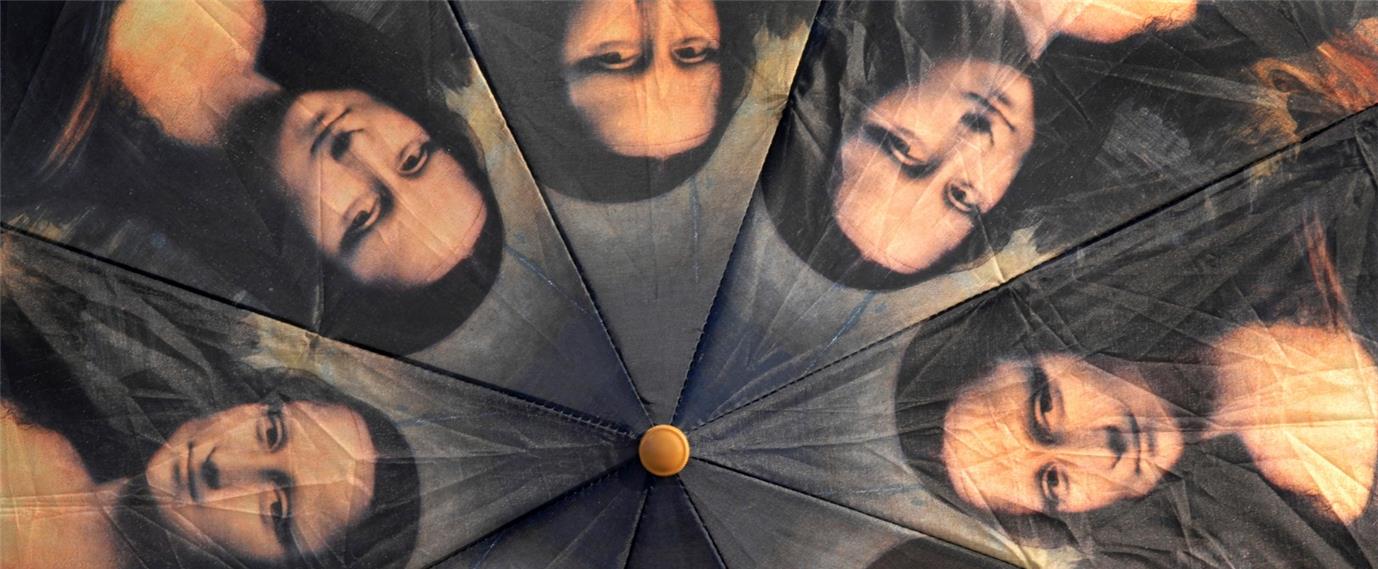عناصر الدراسة:
• مقدمة
1. الثلج والجدار
2. الرسام والفيلسوف
3. الإمبراطور والشلال
4. الأمير وقصر عمرة
5. الصورة والتمثيل
6. الصورة والإدراك
• خاتمة
البحث
• مقدمة:
يبدو من المشروع لنا كمدخل لمعالجة موضوع الصورة، أن نطرح الأسئلة التالية: ما هي الصورة؟ وما سر نزوع الإنسان إليها عبر مختلف الأزمان؟ وكيف ينشأ المعنى في براثنها؟ وكيف يتم إدراكها وتذوقها؟ ثم على أي أساس يُعاد إنتاجها؟
نتحدث هنا عن الصورة مهما كان حاملها أو تجليها، فهي موضوعنا، وإن حملتها حجارة أو ورق أو شريط أو شاشة أو إلكترون تماثلي أو رقمي (2) أو غيره، وإن تجلت في شكل رسم أو نحت أو تصوير فوتغرافي أو بصري، أو بيان غرافيكي، أو غيره.
لأجل ذلك، سنعتمد مقاربة علم السيميائيات، وهو علم لدراسة العلامات اللغوية وغير اللغوية، باعتباره المجال الأكثر اهتماما بدراسة الصورة بشكل متكامل.
1. الثلج والجدار
برجوعنا إلى 33 ألف سنة ماضية، نجد أن مغارة شوفي الواقعة جنوبي فرنسا، قد احتضنت على حيطانها رسومات دقيقة، تمثل خيولا وفيلة ودببة وخنازير وثيرانا، وعمليات مطاردة وصيد. وقد رسمت بمواد نباتية ملونة، حافظت على نصاعتها بفضل انهيار ثلجي ظل يغلق المغارة لقرون عديدة.
ومن المثير للانتباه أن تلك الرسومات قد تمت بطريقة متقنة ودقيقة، وهي تدل على أن مراحل عديدة قد سبقت الوصول إلى ذلك المستوى المتقدم من القدرة على التحكم في أداة ومادة الرسم. ولعل قابل الأيام كفيلة بكشفها، لتطرح علينا أسئلة جديدة.
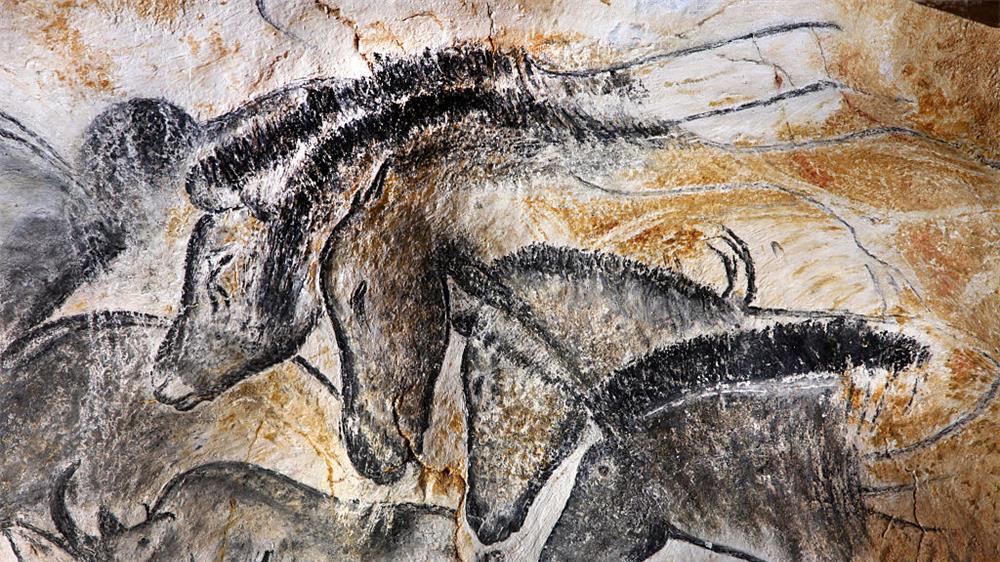
2. الرسام والفيلسوف
تقديرا منهم لعظمة فنه، أهدى الأثينيون خلال القرن الرابع قبل الميلاد رسامهم بوليجنوتوس قصرا فاخرا يسكن فيه. تقدير عكسه اهتمام فلاسفة اليونان بتأملهم فيما هو أبعد من تماثيل آلهة الإغريق في الساحات، ورسومات ملوكهم على الجدران، فحاولوا فك رموز ذلك التمسك بالتشخيص والتصوير، حيث استطاع أرسطو أن يكشف عن كلمة السر في فهم ما يقف وراء كل تلك الأعمال الفنية، حين قال: "إن المحاكاة غريزية في الإنسان تظهر فيه منذ الطفولة، كما أن الناس يجدون لذة في المحاكاة.. فنحن نُسرّ برؤية الصور لأننا نفيد من مشاهدتها علما ونستنبط ما تدل عليه، كأن نقول إن هذه الصورة صورة فلان" (3).
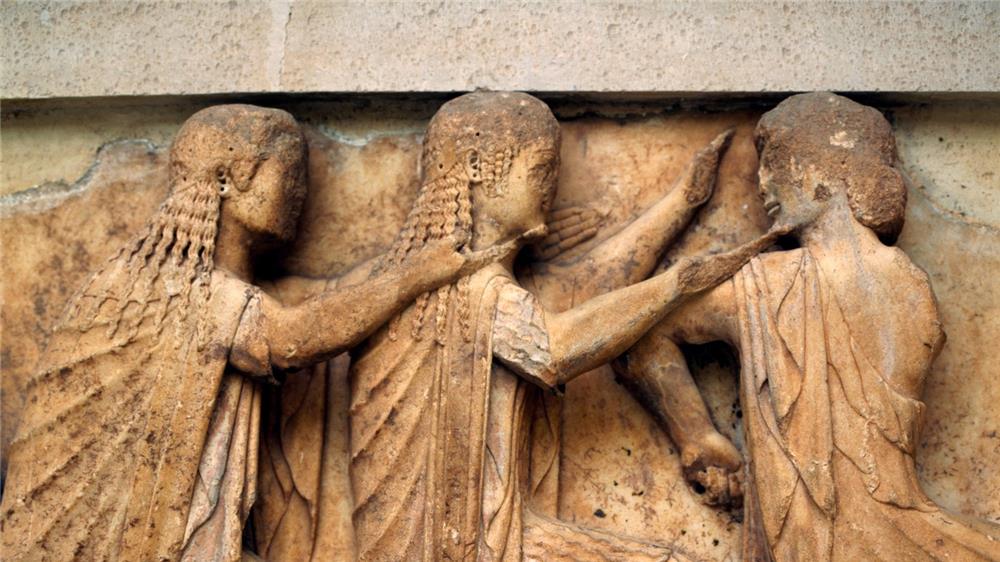
يتأسس مفهوم "المحاكاة" لدى أرسطو على ثنائية تقسيم العالم إلى عالم الطبيعة وعالم التمثال، حيث ينعكس عالم الطبيعة على عالم التمثال بالإلهام، وينعكس عالم التمثال على عالم الطبيعة بالمحاكاة.
وكما يفرز عالم الطبيعةِ الأشياءَ والمواضيع "Objects"، فإن عالم التمثال يفرز الصور والأيقونات "Icones".
ولنلخص تصوره حول موضوع المحاكاة، يمكن أن نعتمد الخطاطة التالية:
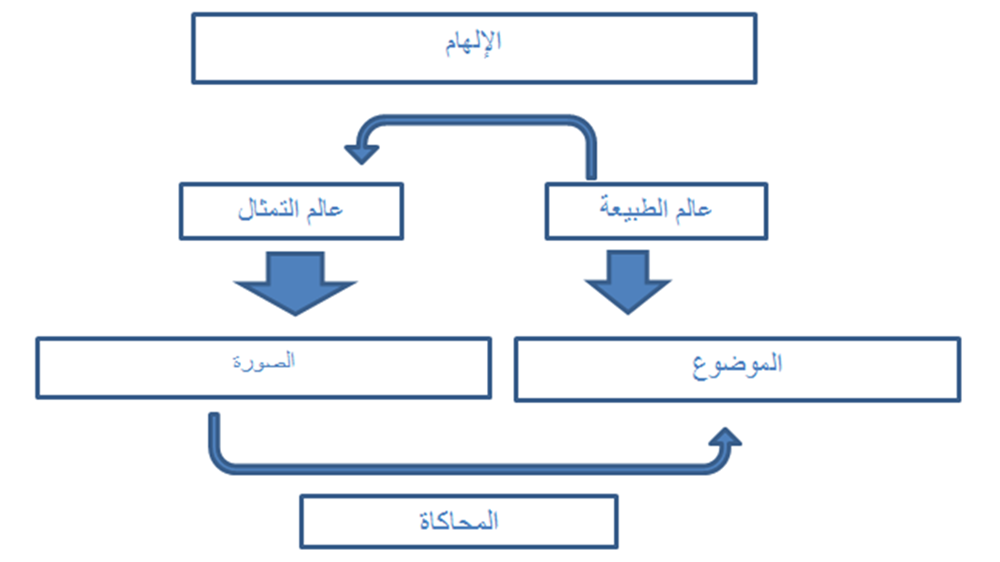
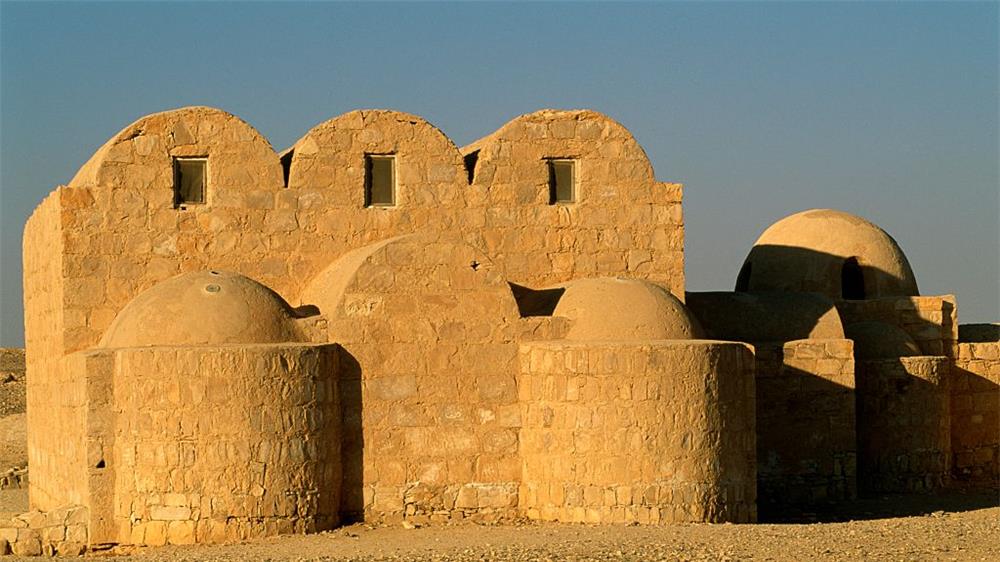
الصورة والتمثيل:

وأما السيميائي الفرنسي رولان بارت (Roland Barthes) (5)، فقد حاول سنة 1964 أن يكمل ما بدأه أرسطو بخصوص "المحاكاة"، لكنه اعتمد مصطلح "التمثيل" بديلا عنه، وذلك في مقالته "بلاغة الصورة"، حيث تساءل: "هل يستطيع التمثيل التماثلي -أي النسخة ـ إنتاج نظام حقيقي للعلامة، وليس مجرد إلصاق للرمز؟ ثم إلى أيِّ حد يمكن التنظير للسنن التماثلية (6)؟".
ويمكننا أن نتساءل معه بعبارات أخرى:
- إلى أي حد يمكن للصورة أن تمثل الشيء ذاته؟
- ما الحدود الدنيا التي لا يمكن للصورة النزول عنها لتغدو صورة للشيء؟
- وما الحدود القصوى التي لا يمكن لها أن تتعداها فلا تصبح ذات الشيء؟
- وما الحدود التي تفصل بين الصورة والرمز؟
- متى تكون الصورة صورة للشيء، ومتى تصبح مجرد رمز له؟
فإذا أخذنا "صورة القمر" كمثال، نستطيع أن نطرح السؤال التالي:
- ما الذي يجعلنا متفقين على أن ما تشير إليه الصورة يحيلنا على القمر الطبيعي؟
- ما الخصائص التي افتقدها القمر الطبيعي حينما تم تمثيله على الصورة؟ (ما الفرق بين الصورة رقم 5 والصورة رقم 6؟).
- ما الخصائص التي يحتفظ بها القمر التمثيلي ليحيلنا على القمر الطبيعي لا على كرة القدم مثلا؟
- ما الخصائص التي إذا افتقدتها صورة القمر (رقم 5) تصبح مجرد رمز له، لا صورة تمثله؟
- ما الخصائص التي إذا افتقدها الرمز قد يحيل على غير القمر الطبيعي؟

6. الصورة والإدراك:
حينما يتلقى أي منا صورة ما، فهو يجري عدة عمليات سريعة عبر ذهنه (بنيته الإدراكية) قبل أن يتعرف على ما يراه من موضوعاتها (المعطيات الموصوفة)، حيث إنه مزود بما يمكن أن نسميه "معجما" تفسيريا لما يرى.
يتكون هذا المعجم من حصيلة ما استنسخه من صور بصرية سابقة تم تخزينها في ذاكرته لتشكل "ثقافته البصرية"، حيث يعمل على استدعائها ومقارنتها بما يرى.
ثم يعمل على استدعاء ما تخزن لديه من صور ذهنية لا تنتمي إلى مرجع خاص من حيث الزمان والمكان، وهي حصيلة ما قام بتجريده عبر ثقافته البصرية، والتي تساعده على تصنيف مواضيع الصور التي يراها.
ومجموع تلك العمليات تقع ضمن ما يسمى "البنية الإدراكية".
وقد عبر عن ذلك السيميائي المغربي سعيد بنكراد (7) فقال: "إن الإدراك لا يتم دفعة واحدة دون وسائط، فالصورة لا تحضر في الذهن باعتبار وجودها المخصوص، بل تأتي إلى العين من خلال خطاطة مجردة يطلَق عليها "البنية الإدراكية" أو "النموذج الإدراكي". فالفعل الإدراكي يبحث في المعطيات الموصوفة عما يتطابق مع الخطاطات المجردة التي تمد بها الثقافة متلقي الصورة، وحين يتم هذا التطابق تبدأ عملية التعرف والتسمية والتصنيف" (8).
وإذا أردنا ان نختبر ما سبق بناء على الصور التي بين أيدينا (الصورة 7: القط والقمر)، فيمكن أن نقول:
في المرحلة الأولى، نتلقى صورة بصرية ما، لها أشكال منحنية ومقوسة ومائلة، ثم ألوانا سوداء وبرتقالية وصفراء.
نقارنها مع ما تخزن في ذهننا من صور، فندرك مثلا أننا نرى هذه الصورة لأول مرة، فننتقل إلى تجريد عناصرها كصور ذهنية.
في تلك اللحظة نبدأ في مطابقتها مع الصور الذهنية المخزنة لدينا، فنطابق "القط الذهني" بالقط البصري، فندرك أننا نرى قطا، ونفعل نفس الشيء مع بقية موضوعات الصورة، ثم نقوم بتركيب تلك الموضوعات لنحاول تشكيل الرسالة التي تشير إليها الصورة.

المستوى الإدراكي البصري إنما هو مستوى أول، وإلا فهناك مستويات إدراكية أكثر عمقا وتعقيدا، إذ يأتي بعده المستوى الإدراكي الثقافي، وهو الموالي للبصري، ففي الوقت الذي قد نتساوى غالبا في تحقيق الإدراك البصري، فإننا سنتفاوت بالتأكيد في تحقيق المستوى الثقافي، إذ عوض "المعجم البصري" يحضر هنا ما نسميه "المعجم الثقافي".
لذلك حينما سيتعامل المتلقي العربي مع صورة "القط والقمر" مثلا (الصورة رقم 7)، فقد لا تعني له أكثر من قط فوق السطح يترقب فريسته ليلا.
أما المتلقي الأوروبي مثلا، فسيستحضر دفعة واحدة كل تلك الأساطير والمحكيات والأشعار والأمثال التي تثوي في ذاكرته، والتي تعني -ضمن ما تعنيه- له رمزيات الشجاعة والإقدام والاستقلالية، كما قد تردّه إلى العلاقة الأسطورية بين القط والقمر، والتي تعتبر القط مخلوقا من القمر، وبالتالي فهو كل ليل يحنّ إليه ويحاكيه.. وما إلى ذلك من استلهامات.
خاتمة:
هذه بعض المقدمات الأولية التي وددنا طرحها بين يدي المتعامل مع الصورة، كي نسهم في تعريفه بمدى عمق مجال الصورة والتعاطي معها، عكس ما قد يبدو لأول مرة، وذلك حسب ما يتيحه لنا علم السيميائيات الذي أخذ على كاهله مسؤولية دراسة العلامات، ومن ضمنها العلامة المرئية.
وسنحاول في مقالات مقبلة أن نتوسع شيئا فشيئا لنعرض مقدمات أخرى تجعلنا أكثر إحاطة ووعيا بهذا الموضوع، ومنها: الصورة والرسالة، والصورة والانفعال، وعلاقة الصورة بالشيء، وعلاقة الرؤية بالنظر.
هوامش:
(1) السيميائيات أو السيميوطيقا (Semiotics) أو السيميولوجيا (Sémiologie) علم يدرس العلامات أو الإشارات اللغوية وغير اللغوية، وهو يتعدى مجال المنطوق إلى ما هو بصري كعلامات المرور ولغة الصم والبكم والشفرة السرية ودراسة الأزياء وطرائق الطبخ والسينما والتلفزيون والمسرح والإشهار.. وهو علم مبني على المنطق وفلسفة الأشكال الرمزية الأنطولوجية (الوجودية) والرياضيات واللسانيات. ومن أعلام هذا العلم: فرديناند دوسوسير (F.De.Saussure) وتشارلز ساندرز پيرسCharles) Sanders Peirce) ورولان بارت (R.Barthes) .
(2) مصطلحا الرقمي والتماثلي مصطلحان تقنيان في مجال الصناعة الإلكترونية، والفرق بين النظام الرقمي والنظام التماثلي هو نوعية وهيئة الإشارة المتعامل معها من حيث سعتها أو قيمتها، وكذلك من حيث الزمن الذي تشغله. فالإشارة التماثلية يمكن أن تأخذ أي قيمة في زمن مستمر وغير متقطع، بينما الرقمية لا تأخذ إلا إحدى القيم المتعارف عليهما في النظام الواحد وفي أزمنة مستمرة أو متقطعة.
(3) أرسطو، طاليس، فن الشعر، ترجمة عبد الرحمن بدوي، دار الثقافة، بيروت، ص12.
(4) ابن منظور، جمال الدين محمد، لسان العرب، ص: 473، المجلد الرابع، دار صادر، بيروت، بدون سنة.
(5) فيلسوف فرنسي، ناقد أدبي، دلالي، ومنظر اجتماعي، عاش بين عامي 1915 و1980.
(6) (5) Rhétorique de l'image, [article], Roland Barthes, Année 1964 Volume 4 Numéro 1, Année 1964 Volume 4 Numéro 1 pp. 40-51, Communications.
(7) سعيد بنكراد سيميائي مغربي، أنجز لحد الآن أكثر من عشرين كتابا، تُعدّ مرجعا عربيا في مجال دراسة الصورة والسرد.
(8) بنكراد، سعيد، السيميائيات.. مفاهيمها وتطبيقاتها، ص:85، منشورات الزمن، 2002.
* الصور المستخدمة مأخوذة من موقع جيتي
